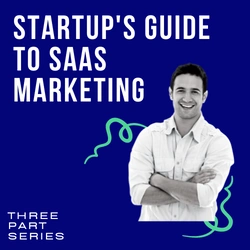5 Clever Tips to Successfully and Fearlessly Market Your Website on a Ramen Noodle Budget
You have a solid product that you believe in AND you’ve found an audience for it, but you’re struggling to market it affordably – sound familiar? You’re not alone!
According to Microsoft, most small businesses need over $11,000 just to get off the ground, but most begin with less than $10,000 according to Fundera. This doesn’t leave much room for a marketing budget.
And these days there are so many platforms people use that to be successful your brand must appear on most, if not all, effectively. Sounds expensive right? Doesn’t have to be!
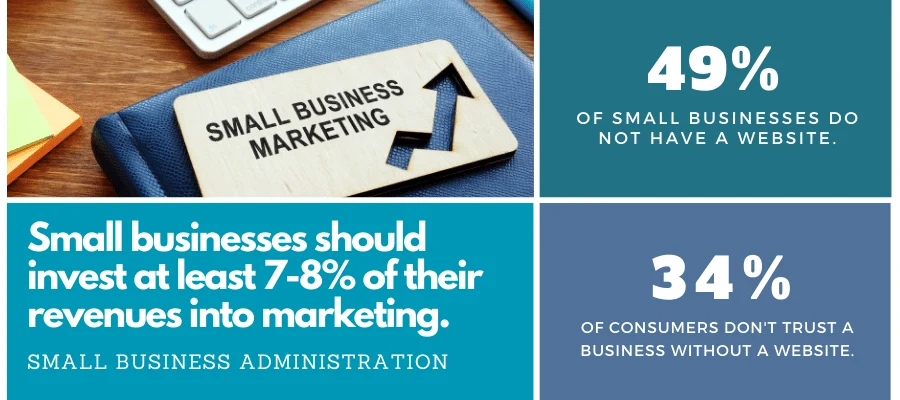
A lot of small businesses turn to marketing companies who will provide you with a campaign that may work, but at considerable expense. Usually your marketing budget will get swallowed by the cost of developing the campaign, leaving little in the budget to effectively implement it.
So, before you hire that marketing expert, check out our 5 tips to market your business without draining your personal savings account; something a shocking 77% of small business startups do. Alternatively, if you’re pining for a marketing expert, among other things, we can help you out!
1. DESIGNATE YOURSELF AS THE MARKETING EXPERT
A lot of people struggle to find their message and as a result hire a marketing expert to do the work for them, which is going to be far more costly than you think it will be. You’ll often end up blowing your entire marketing budget on the design of the campaign, and you’ll have nothing or little left to spend running that campaign. It costs money to get your ads onto people’s screens.
While it’s true that you could outsource this at considerable cost, think about your product. You know your product better than anyone. You believe in your product, and you want to share it with others.
What does that have to do with anything?
You are the most qualified person to design the marketing campaign for your product. You’ll save a considerable amount of money long-term, but it is going to take some dedication to figuring out what the right tactics are for your product. If you can’t sell it to yourself, then you don’t have a marketable product.
The work you will have to do to make yourself an expert at marketing your product is research and ask yourself these questions:
- How are my competitors marketing their products?
- Where will my target audience be most influenced by my campaign?
- Do I have the time/personnel to dedicate to being active on social media?
- Do I have a consistent theme and logo scheme?
- Is my campaign culturally inclusive?
Once your business is making money, you can investigate passing the torch to a dedicated marketing company or someone you hire specifically for that job. For the time being, to get started, don’t make this one of your big upfront costs. The money you save here can be used to implement the campaign you’ve designed, and any extra savings can be reinvested in your product.
2. DESIGN AND BUILD YOUR BRAND YOURSELF
Since you have just hired yourself as the marketing expert, you may be thinking of opening MS Paint and whipping up something quick and easy; this is a Ramen Noodle budget after all, isn’t it. Since you’re a small business with a limited budget, you’re not going to reach as many people as Apple, so you have to make sure those you do reach see something they like and trust.
If people don’t trust your branding, they won’t buy from you. You need to pick your colors, website, icons, social media logos, the media you share and most importantly your main logo carefully and strategically. You’re establishing a new, cohesive brand here, after all!
So with limited money, what should you do?
- Study popular brand personalities (Wendy’s, JetBlue, Innocent Drinks and DiGiorno Pizza are some with unique personalities) to determine which would resonate best with your customers. 12 helpful brand personalities listed here.
- Create a Canva account, so you can create a professional logo easily. Keep this account handy as they offer other templates useful for marketing. Some features are pay walled (everyone has to make money somehow).
- Keep it simple and consistent. You want your brand to be easily recognizable, and changing the core theme between services will hinder you.
Rolling Stone is a good example of a consistent brand. Whether you’re on their website, their Facebook or Twitter, you know you’re looking at Rolling Stone. The site is consistent with their original branding we all came to know via their magazine.
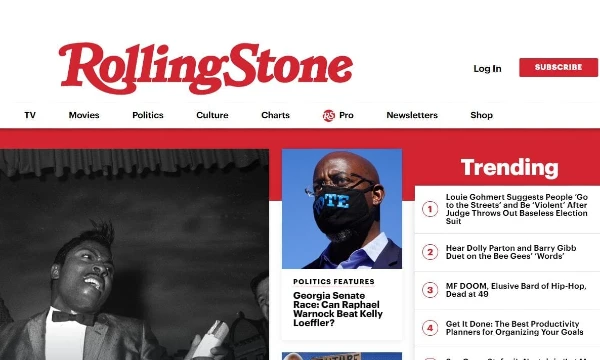
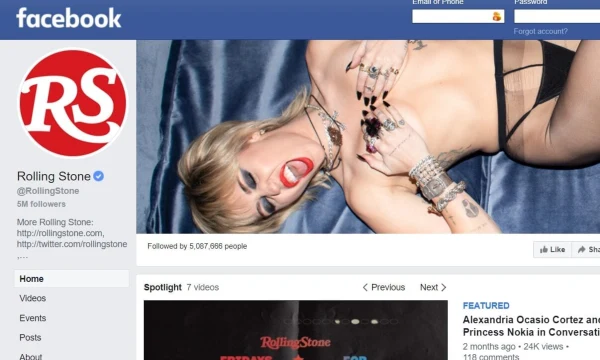
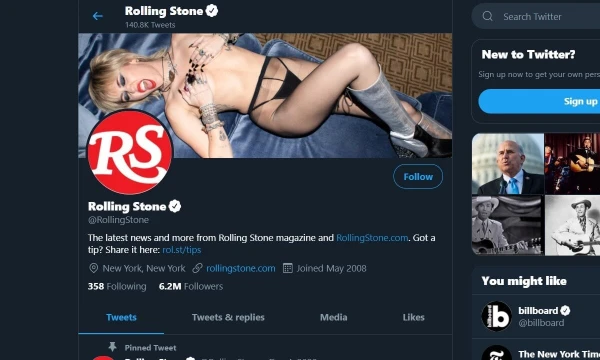
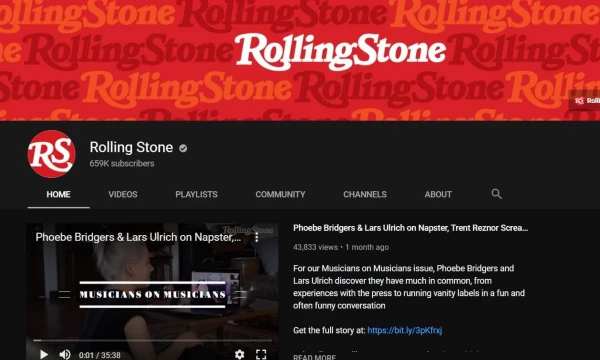
3. BUILD A WEBSITE PROFESSIONALLY BUT INEXPENSIVELY
Once you have your branding handled, it’s time to design your website. I’m sure you’ve seen some commercials for companies that advertise inexpensive yet professional website designs, and you’re thinking of going that route, but I would avoid that if possible. The lowest cost options those companies provide often look cheap, and they may do more harm than good to your new business venture.
Thankfully, better alternatives exist if you’re willing to put in a little effort. WordPress, what we use, is a free and open-sourced website platform that has been around for nearly two decades and is utilized by many popular businesses.
Five notable websites that use WordPress:
- BBC America
- TechCrunch
- The Official Star Wars Blog
- The New Yorker
- Bloomberg Professional
It will require that you spend some time finding a theme that fits your branding and budget (free themes are not the route to go here). You’ll then need to customize the look of the theme to fit your needs. Many themes will come with ecommerce support, so you can seamlessly sell your product via WooCommerce.
WordPress Makes It Easy
WordPress can get you up and running without the need to spend thousands of dollars on a professionally designed site, and it can be done with little knowledge of HTML coding. There are some things to note, however.
- Theme trial and error is necessary. Some plugins you find necessary and attractive could break your core theme and slow down your site.
- Make sure your paid theme has support and a plan for continued support. Look for YouTube tutorials as well.
- Wait before upgrading and updating both WordPress and plugins. It may be new and shiny, but it might screw up your website. Wait for everything to be compatible with your core WordPress version.
- Make sure it looks good on mobile!
Most professional WordPress theme designs cost less than $100 and allow you to preview how it will look. On the other hand, ServerWise includes over 100 premium themes including the fastest theme ever made, GeneratePress. Along with numerous other advantages for small businesses and digital marketers for just $79 a month.
4. TAKE ADVANTAGE OF AN ORGANIC MARKETING STRATEGY
Organic marketing is ideal for anyone on a budget because it costs nothing but time. You’ll have to spend quite a bit of time becoming extremely familiar with SEO (Search Engine Optimization), content marketing as well as social media marketing to market your product cheaply yet effectively.
We’ve written about SEO and how Google will be implementing some changes to their own interpretation of SEO this year. With that in mind, you’ll need to be up to speed on the changes because making sure Google likes your website is paramount to maintaining your search ranking.
Leveraging content marketing is done by creating content that adds value to your customer base and encourages them to take an action. In this regard, we offer free content laden PDF files if you subscribe to our email list. This blog post that you’re reading is also part of our content marketing strategy.
It’s also important to leverage social media marketing in an effective but practical way. If your audience isn’t on Twitter, for example, then you shouldn’t be wasting time there.
Find out where your core audience is the most active, target it and engage with them. Make sure to share quality content that drives them to engage with you as well. Remember that everyone enjoys something useful for free.
5. ONLY USE PAID MARKETING TO BOOST ORGANIC TRAFFIC
I’m not suggesting you dump your advertising budget into a single Google or Facebook Ad campaign. It won’t be enough to drive traffic to you. While these services do work, it takes a lot of money for them to be effective. It’s important you know that paid marketing is always most effective with a continued (and expensive) presence rather than a cheap onetime campaign. So essentially once you make the investment and start driving paid traffic you have to keep doing it.
Happily, there’s another way; instead of burning your money for quick sales, run ads that encourage your target audience to read your latest blog post or watch your newest YouTube video. This way, you’ll be able to snag their email addresses and turn them into subscribers, so you can market to them later.
Oftentimes, if people like your free content, they will share it. In time, those shares will boost your Google search standing, giving you a competitive advantage.
Those shares will turn into more visits to your website, which eventually result in more sales and a loyal customer base. Yes, you will be spending money here, but your goals are longer term. You’re promoting content to increase your subscribers and leads.
This whole process is an investment in your SEO, email lists and social media engagement. The overall amount doesn’t need to be a lot, since your organic content will already be working for you. Even just a $30 campaign can elevate you with a little thought and preparation.
The three places to spend that money:
Three quick tips to get budget-friendly attention:
1
A limited beta creates interest.
You can create a limited release beta for your startup. It’s an easy way to generate a lot of interest, and people always enjoy being part of an exclusive club. Consider allowing those that sign up initially the ability to give out a handful of invites to those they know, so the buzz can build. This style of marketing worked well for PayPal, Slack and others.
2
A freebie creates leads, and leads generate sales.
Who doesn’t love free stuff? You may consider giving away something like free stickers. This gets your branding into the hands of a lot of people quickly, and often they’ll stick it in highly visible places. This style of marketing is relatively inexpensive if you buy them in bulk and can generate a lot of interest in your business if your sticker design is attractive. It worked for Reddit and the founder only spent $500 on them.
3
Humorous or unique videos lead to shares and a wider audience.
Now, this isn’t the easiest thing to do, but it can be done. You can create a humorous video about your product/service that could go viral. This path offers you success only if you or someone you know is funny. The greatest example of this is with Poo-Pourri, a company that sells a pre-#2-bathroom spray, which created a video titled “Girls Don’t Poop” that has garnered over 43 million views in the 7 years since it hit YouTube.
That single video has been so successful for them that parts of it are still used on their homepage.
In conclusion, with the core steps above you will not only save money, but you’ll also learn firsthand what makes your brand tick so that once you start making money and want to pass this off to someone else you can give them an unobstructed vision and an established brand which will help lower your overall costs.
Related Downloads
MARKETING ON A
RAMEN NOODLE BUDGET
RESOURCE LIST



It’s the sales page where the magic happens. This is the page that gives you a return on your marketing investment. It is on this page where we convert visitors to paying customers. Do you know the valuable elements of a high-converting sales page? You will soon. Keep Learning >

Content marketing is the backbone of the biggest success stories over the last decade. I’m referring to companies like Zomato, Canva, ThinkGeek, HootSuite and even Blendtec. It’s not surprising that so many brands are focusing on content marketing, given the average ROI is twice any other type of digital marketing. Keep Learning >


